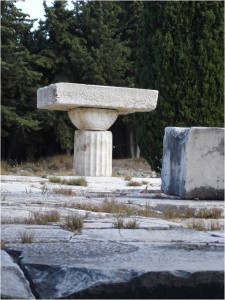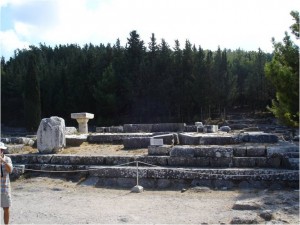-
- Social and legal history (slavery, war and cultures of war, charity)
- Cultural history (funerals, concepts of the afterlife; ancient Christianity and pagan environment; popular beliefs)
- Hagiography (ancient Christian saints and their reception in later times, e.g. Legenda Aurea)
- Historical women’s studies (e.g. Olympias of Constantinople; functions and role models of women in Christian societies; family life)
- Power and ruler figures
The Cultic Topography of Greece: Continuities and Discontinuities from the Roman Conquest to the Byzantine Period
Project leaders: Heide Frielinghaus (Classical Archeology), Heike Grieser (Early Church History and Patristics) and Vasiliki Tsamakda (Christian Archeology and Byzantine Art History)
Like many other regions, the sacred landscape of Greece constantly changed over the course of its history. The foundation, utilization/upkeep, expansion/reduction, abandonment and, if necessary, renewed use of cultic spaces were not only dependent on the ever-changing settlement system itself; other factors include, for example, changes in the public’s expectations and demands regarding religion and cult and the functions of particular locations. External pressure, crucial domestic and international political and religious events, and the relative power distribution among political and religious factions as well as individuals were important factors. It is therefore essential to evaluate changes and continuities in the religious landscape in the context of long-term developments.
Within a characteristic, inter-disciplinary framework, the project focuses on the continuity, adaptation, and change of cult and cultic spaces in Greece as a geographically isolated and, despite the variance among its individual 'landscapes', culturally rather uniform region of the Old World. The respective timeframe allows for the consideration of several centuries of pagan, Jewish, and Christian cultic practice in three regards: as part of a century-long development, as (partially) simultaneously occurring phenomena, and as mutually influential rivals. Topography, architecture, numismatology, votive and ritual objects, iconography, and epigraphic and literary sources that concern the various aspects of cultic practice offer a critical basis for the investigation.
Kos, Asclepeion:
Christian altar within the pronaos
of the temple of Asclepios
(© G. Beutmann)

